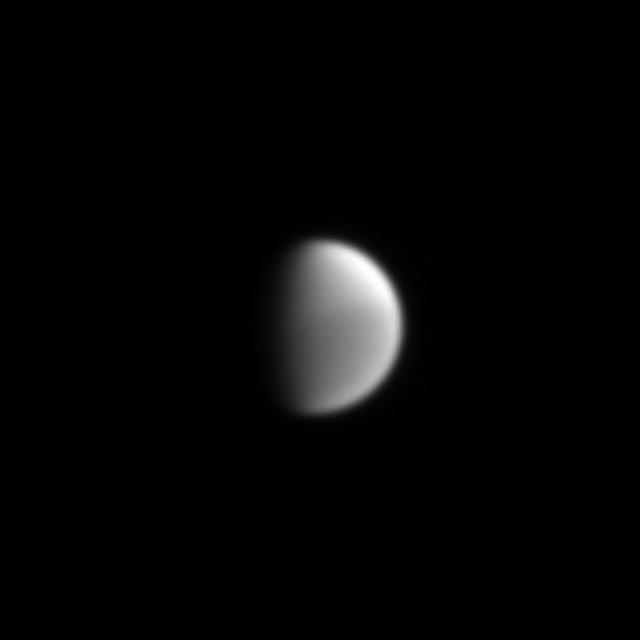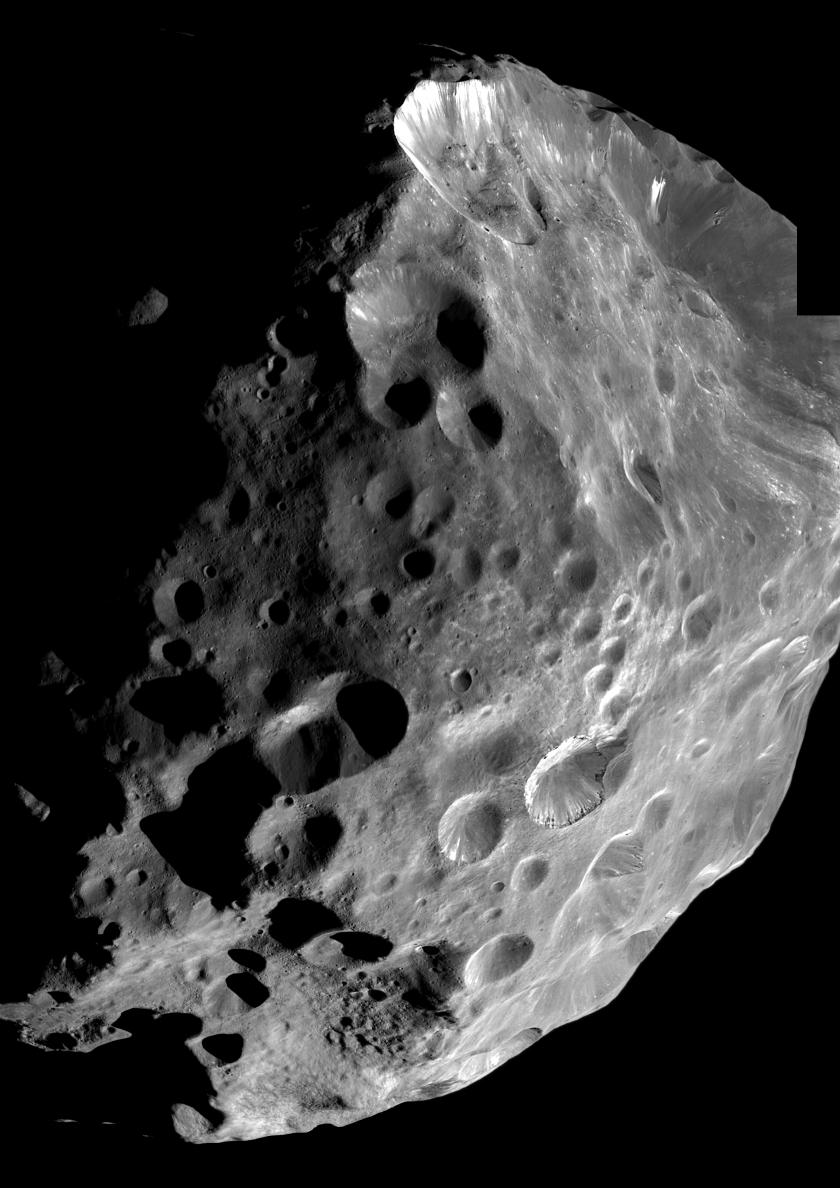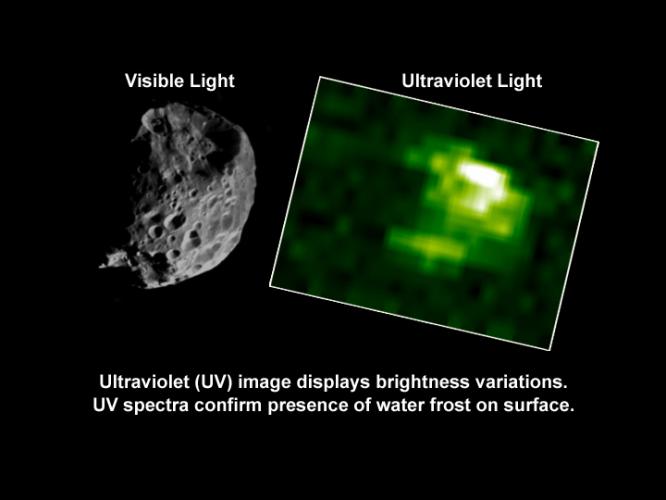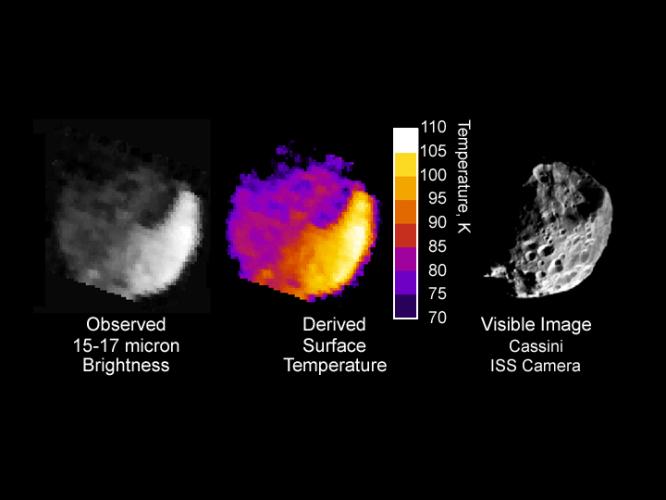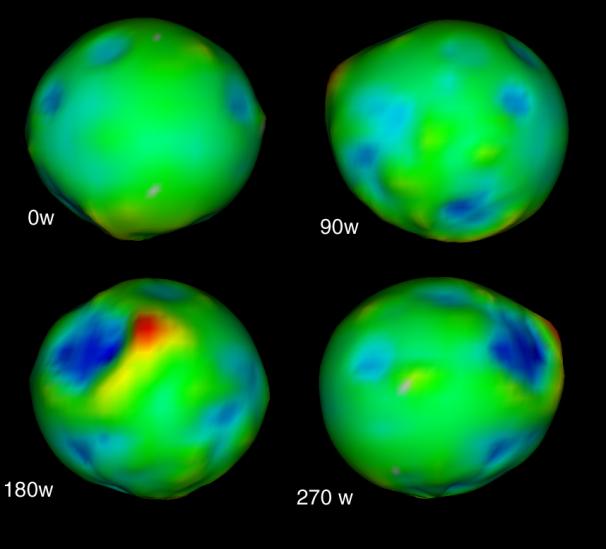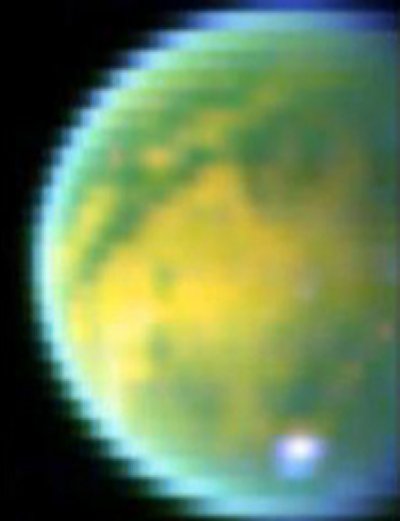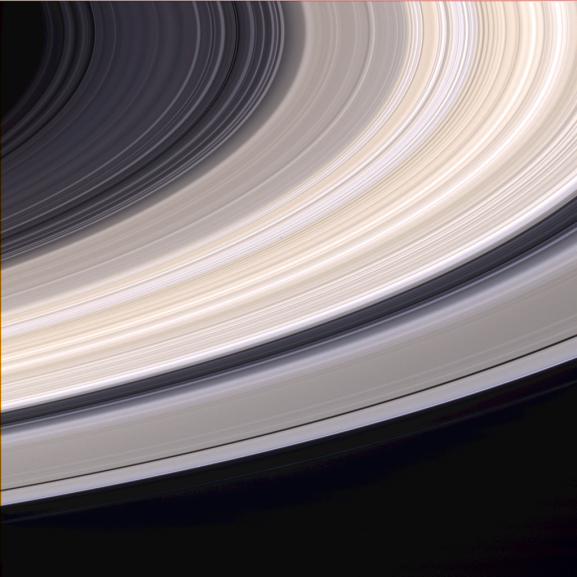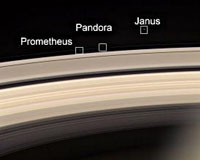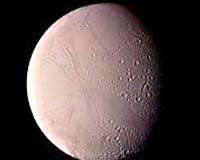WFL Wetenschap, Filosofie, Levensbeschouwing
Discussieer hier over alle aspecten van de wetenschap, filosofische problemen en zaken van levensbeschouwelijke aard.



De planeten in ons zonnestelsel op volgorde en in verhouding tot elkaar. (afstanden natuurlijk niet alleen grootte )
Binnenkort is het zover dan komt de Cassini-Huygens satelliet aan bij Saturnus! Bij deze een Centraal topic met de mooiste pic's, links, info & filmpjes!! Natuurlijk is niet iedereen hier een astronoom (ik ook niet :'( ) dus schroom niet om vragen te posten.
*schop zo nu eerst ff wat info spuien
De satelliet is niet de eerste die een bezoek brengt aan deze planeet dat was Voyager1:quote:Cassini-Huygens approaching Saturn and Titan
26 May 2004
ESA PR 28-2004. Launched in October 1997, the ESA/NASA Cassini-Huygens mission is currently heading for Saturn. While ESA’s Huygens probe will be the first ever to land on the surface of a moon in the outer Solar System, NASA’s Cassini orbiter will continue to explore Saturn and its rings.
After an almost seven-year journey and four gravity-assist swing-by manoeuvres the spacecraft will be inserted into its orbit around Saturn on 30 June (Pacific Daylight Time, 1 July CET) and reach its closest approach to Saturn. The Huygens probe will be detached from its mother ship on 25 December and land on Titan in January next year.
On 3 June a press conference will take place at NASA Headquarters, Washington, with ESA participation, to present the mission and outline milestones and upcoming media activities.
Media representatives can follow this press conference from ESA/ESOC, where several project representatives will be present, together with David Southwood, ESA Director of Science, or from one of the other ESA establishments. They are requested to complete the attached reply form and fax it to the Communication office at the establishment of their choice.
The ESA TV service will also broadcast the press conference via Eutelsat W1. Further information concerning the retransmission schedule can be found on http://television.esa.int.
Note to editors:
The Cassini-Huygens mission is a cooperation between NASA, the European Space Agency and ASI, the Italian space agency. The Jet Propulsion Laboratory, a division of the California Institute of Technology in Pasadena, is managing the mission for NASA’s Office of Space Science, Washington.
foto gemaakt door Voyager 1, en dan bedoel ik niet de SF-serie maar de sateliet die op 5 september 1977 op reis is gestuurd door ons zonnestelsel om de andere planeten een bezoek te brengen zodat we ze eens van dichterbij te kunnen bestuderen.
En natuurlijk de eerste pic (in dit topic) van Saturnus door Cassini-Huygens satelliet zelf natuurlijk:
(dit is tevens de laatste foto geweest waarop Saturnus in zijn geheel oppast aangezien de afstand tussen bijde steeds kleiner wordt... )
NASA
ESA
Space daily
Saturn daily
[/spui]
[ Bericht 0% gewijzigd door Marvin-THE-MARTiAN op 27-05-2004 17:40:28 ]
"Mijn" fotoalbum...
-->creationisme _O- --> http://en.wikipedia.org/wiki/Panspermia *O* evolutie & Darwin O+
-->


een paar van Saturnus manen kwam ik zouist nog tegen, dussum bij deze...
"Mijn" fotoalbum...
-->creationisme _O- --> http://en.wikipedia.org/wiki/Panspermia *O* evolutie & Darwin O+
-->


ligt het aan mij of doet dat plaatje van die manen van Saturnus het niet ? (verkapte terugvindpost)
fokschaap


Kicke, Mimas lijkt op de Deathstar.
Het leven is als een pisvlek in de zwarte pantalon van de eeuwigheid.


hmmm idd ... maarum ik was dus verder aan het surfen via die gegeven links en kom tot de conlusie dat Saturnus 31 (!) manen heeft!!!quote:Op donderdag 27 mei 2004 20:05 schreef Pinobot het volgende:
Kicke, Mimas lijkt op de Deathstar.
1. Pan
2. Atlas
3. Prometheus
4. Pandora
5. Epimetheus
6. Janus
7. Mimas
8. Enceladus
9. Tethys
10. Telesto
11. Calypso
12. Dione
13. Helene
14. Rhea
15. Titan
16. Hyperion
17. Iapetus
18. Phoebe
19. Ymir
20. Paaliaq
21. Siarnaq
22. Tarvos
23. Kiviuq
24. Ijiraq
25. Thrym
26. Skadi
27. Mundilfari
28. Erriapo
29. Albiorix
30. Suttung
31. S/2003 S1
Hmmm de eerste twintig inschrijvingen mogen er gratis eentje uitzoeken
"Mijn" fotoalbum...
-->creationisme _O- --> http://en.wikipedia.org/wiki/Panspermia *O* evolutie & Darwin O+
-->


Ja ej, pure Romantiek, mooi. Die manen, dat vind ik eigenlijk een beetje dubbel: Volgens mij vinden ze elk jaar wel een paar, ik geloof dat Jupiter laatst er in 1 klap 10 bij heeft gekregen.
Offtopic: 8 juni is er een venusovergang ! De eerste sinds 122 jaar. ' s Ochtends, geloof ik.
En weer ontopic.
Offtopic: 8 juni is er een venusovergang ! De eerste sinds 122 jaar. ' s Ochtends, geloof ik.
En weer ontopic.
Ik schrijf boeken over wetenschap en filosofie!
https://www.epsilon-uitga(...)e-tijd-materie/10996
https://www.spectrumboeke(...)k-niet-9789000386765
https://www.spectrumboeke(...)tronen-9789000395071
https://www.epsilon-uitga(...)e-tijd-materie/10996
https://www.spectrumboeke(...)k-niet-9789000386765
https://www.spectrumboeke(...)tronen-9789000395071


En Titanus is bijzonder interessant, omdat het de enige maan in ons zonnestelsel is met een atmosfeer.
Ik schrijf boeken over wetenschap en filosofie!
https://www.epsilon-uitga(...)e-tijd-materie/10996
https://www.spectrumboeke(...)k-niet-9789000386765
https://www.spectrumboeke(...)tronen-9789000395071
https://www.epsilon-uitga(...)e-tijd-materie/10996
https://www.spectrumboeke(...)k-niet-9789000386765
https://www.spectrumboeke(...)tronen-9789000395071


Present
Je kunt ook zien waar Cassini-Huygensop dit ogenblik is...
[ Bericht 39% gewijzigd door -CRASH- op 28-05-2004 22:54:37 ]
Je kunt ook zien waar Cassini-Huygensop dit ogenblik is...
Hou het maar gewoon op Titanusquote:Op vrijdag 28 mei 2004 13:15 schreef Haushofer het volgende:
En Titanus is bijzonder interessant, omdat het de enige maan in ons zonnestelsel is met een atmosfeer.
[ Bericht 39% gewijzigd door -CRASH- op 28-05-2004 22:54:37 ]
<a href="http://www.vwkweb.nl/" rel="nofollow" target="_blank">[b]Vereniging voor weerkunde en klimatologie[/b]</a>
<a href="http://www.estofex.org/" rel="nofollow" target="_blank">[b]ESTOFEX[/b]</a>
<a href="http://www.estofex.org/" rel="nofollow" target="_blank">[b]ESTOFEX[/b]</a>


Dat is het nu toch alquote:Op zaterdag 29 mei 2004 00:51 schreef whosvegas het volgende:
Cool topic, wordt boeiend als Cassini bij Sarturnus aankomt
<a href="http://www.vwkweb.nl/" rel="nofollow" target="_blank">[b]Vereniging voor weerkunde en klimatologie[/b]</a>
<a href="http://www.estofex.org/" rel="nofollow" target="_blank">[b]ESTOFEX[/b]</a>
<a href="http://www.estofex.org/" rel="nofollow" target="_blank">[b]ESTOFEX[/b]</a>


bestaande uit....???quote:Op vrijdag 28 mei 2004 13:15 schreef Haushofer het volgende:
En Titanus is bijzonder interessant, omdat het de enige maan in ons zonnestelsel is met een atmosfeer.


BRONquote:Op zaterdag 29 mei 2004 12:25 schreef pfaf het volgende:
[..]
bestaande uit....???
Titan is omringt door een dikke, vale atmosfeer;
van het oppervlak kan men helemaal niets zien.
De Cassini missie zal met een radar het oppervlak volledig in kaart brengen net zoals de Magellan gedaan heeft met het oppervlak van Venus.
Het enige wat we met de Voyager te weten kwamen is dat er een klein verschil is tussen het noordelijk en zuidelijk halfrond.
Een paar oppervlaktedetails zijn zichtbaar met de infraroodcamera van de HST.
Als enige satelliet in het zonnestelsel heeft Titan een belangrijke atmosfeer.
Aan het oppervlak is de druk meer dan 1,5 bar (50% meer dan bij Aarde).
De atmosfeer bestaat hoofdzakelijk uit stikstof (net zoals op aarde) met ongeveer
15% argon en een paar procent methaan.
Tot verwondering van velen zijn er sporen van ongeveer een dozijn andere organische
componenten (zoals ethaan, hydrogen cyanide, koolstofdioxide).
De organische stoffen zoals methaan, die de bovenste atmosfeer van Titan domineren,
worden vernietigd door het zonlicht. Met als resultaat dat er een smog gevormd wordt
die een heel stuk dikker is dan de smog die zich vormt boven de steden op aarde.
In verschillende opzichten is dit hetzelfde proces dat plaatsvond op de aarde in de
periode dat het eerste leven ontstaan is.
<a href="http://www.vwkweb.nl/" rel="nofollow" target="_blank">[b]Vereniging voor weerkunde en klimatologie[/b]</a>
<a href="http://www.estofex.org/" rel="nofollow" target="_blank">[b]ESTOFEX[/b]</a>
<a href="http://www.estofex.org/" rel="nofollow" target="_blank">[b]ESTOFEX[/b]</a>


Titan Casts Revealing Shadow
Cambridge MA - Apr 06, 2004
A rare celestial event was captured by NASA's
Chandra X-ray Observatory as Titan -- Saturn's largest moon
and the only moon in the Solar System with a thick atmosphere --
crossed in front of the X-ray bright Crab Nebula. The X-ray shadow
cast by Titan allowed astronomers to make the first X-ray measurement
of the extent of its atmosphere.
On January 5, 2003, Titan transited the Crab Nebula,
the remnant of a supernova explosion that was
observed to occur in the year 1054. Although Saturn and
Titan pass within a few degrees of the Crab Nebula
every 30 years, they rarely pass directly in front of it.
Titan passes within a few degrees of the Crab Nebula every 30 years,
it rarely passes directly in front of it. "This may have been the first transit
of the Crab Nebula by Titan since the nebula was formed by a supernova
that was observed to occur in the year 1054",
said Koji Mori of Pennsylvania State University in University Park,
and lead author on an Astrophysical Journal paper describing these results.
The next similar conjunction will take place in the year 2267.
so this was truly a once in a lifetime event
Cambridge MA - Apr 06, 2004
A rare celestial event was captured by NASA's
Chandra X-ray Observatory as Titan -- Saturn's largest moon
and the only moon in the Solar System with a thick atmosphere --
crossed in front of the X-ray bright Crab Nebula. The X-ray shadow
cast by Titan allowed astronomers to make the first X-ray measurement
of the extent of its atmosphere.
On January 5, 2003, Titan transited the Crab Nebula,
the remnant of a supernova explosion that was
observed to occur in the year 1054. Although Saturn and
Titan pass within a few degrees of the Crab Nebula
every 30 years, they rarely pass directly in front of it.
Titan passes within a few degrees of the Crab Nebula every 30 years,
it rarely passes directly in front of it. "This may have been the first transit
of the Crab Nebula by Titan since the nebula was formed by a supernova
that was observed to occur in the year 1054",
said Koji Mori of Pennsylvania State University in University Park,
and lead author on an Astrophysical Journal paper describing these results.
The next similar conjunction will take place in the year 2267.
so this was truly a once in a lifetime event
<a href="http://www.vwkweb.nl/" rel="nofollow" target="_blank">[b]Vereniging voor weerkunde en klimatologie[/b]</a>
<a href="http://www.estofex.org/" rel="nofollow" target="_blank">[b]ESTOFEX[/b]</a>
<a href="http://www.estofex.org/" rel="nofollow" target="_blank">[b]ESTOFEX[/b]</a>


http://saturn.jpl.nasa.gov/operations/saturn-time.cfmquote:Op maandag 31 mei 2004 16:43 schreef devilish1980 het volgende:
hoe lang nog
On July 1, 2004 the Cassini-Huygens spacecraft will fire its main engine to reduce its speed, allowing the spacecraft to be captured by Saturn's gravity and enter orbit. The spacecraft will then begin a four-year tour of the ringed planet, its mysterious moons, the stunning rings, and its complex magnetic environment.
During the Saturn Tour, Cassini will complete 74 orbits of the ringed planet, 44 close flybys of the mysterious moon Titan, and numerous flybys of Saturn's other icy moons.
Key dates of the Saturn Tour are:
June 11, 2004 (19:32 UTC): Flyby of the furthest moon orbiting Saturn, Phoebe, at an altitude of 2,000 km (1,243 miles).
July 1, 2004: Crossing of Saturn's Ring Plane during the spacecraft's critical Saturn Orbit Insertion sequence.
Dec. 25, 2004: 02:00 UTC Huygens probe separates from the Cassini orbiter and begins its 22 day journey to Titan.
Jan. 14, 2005: Huygens begins its descent through Titan's cloudy atmosphere, where it lands on the surface about two and half hours later. The probe is scheduled to encounter the upper fringes of Titan's atmosphere at 09:00 UTC.
[ Bericht 3% gewijzigd door -CRASH- op 31-05-2004 17:19:59 ]
<a href="http://www.vwkweb.nl/" rel="nofollow" target="_blank">[b]Vereniging voor weerkunde en klimatologie[/b]</a>
<a href="http://www.estofex.org/" rel="nofollow" target="_blank">[b]ESTOFEX[/b]</a>
<a href="http://www.estofex.org/" rel="nofollow" target="_blank">[b]ESTOFEX[/b]</a>


Dan lurk maar lekker verderquote:Op maandag 31 mei 2004 17:19 schreef k3vil het volgende:
Mooie bijdrages in een mooi topic
*lurkt verder*
Eigenlijk zou een apart
sterrenkunde en ruimtevaart
forum op fok niet slecht zijn.
<a href="http://www.vwkweb.nl/" rel="nofollow" target="_blank">[b]Vereniging voor weerkunde en klimatologie[/b]</a>
<a href="http://www.estofex.org/" rel="nofollow" target="_blank">[b]ESTOFEX[/b]</a>
<a href="http://www.estofex.org/" rel="nofollow" target="_blank">[b]ESTOFEX[/b]</a>


Hmm, daar zou te weinig gesprekstof voor zijn. En ja, ik weet het, het heelal is fokking groot.quote:Op maandag 31 mei 2004 17:27 schreef -CRASH- het volgende:
[..]
Dan lurk maar lekker verder
Eigenlijk zou een apart
sterrenkunde en ruimtevaart
forum op fok niet slecht zijn.


Vergis je daar maar niet in...quote:Op maandag 31 mei 2004 17:34 schreef k3vil het volgende:
[..]
Hmm, daar zou te weinig gesprekstof voor zijn. En ja, ik weet het, het heelal is fokking groot.
Er zijn nog fokkers die er niks of
weinig over weten......
------------------------------------------
But... lets get back to Saturn.
Saturn's Stripes
May 31, 2004
This image shows the delicate banded nature of Saturn's atmosphere.
Notable is the small white spot just north of the dark south polar collar.
The image was taken with the Cassini narrow angle camera on
May 4, 2004, at a distance of 29.7 million kilometers (18.5 million miles)
from Saturn. Image scale is 177 kilometers (110 miles) per pixel.
The image has been contrast-enhanced to aid visibility.
Image Credit:
NASA/JPL/Space Science Institute
<a href="http://www.vwkweb.nl/" rel="nofollow" target="_blank">[b]Vereniging voor weerkunde en klimatologie[/b]</a>
<a href="http://www.estofex.org/" rel="nofollow" target="_blank">[b]ESTOFEX[/b]</a>
<a href="http://www.estofex.org/" rel="nofollow" target="_blank">[b]ESTOFEX[/b]</a>


Hoe zit dat met die banden in de atmostfeer? Komt het doordat de gasreus snel om zijn as draait? Ik vraag me gelijk af hoe het zou zijn als je daar dan op een pool zou staan. DRAAIERIG!! vast nietquote:Op maandag 31 mei 2004 17:48 schreef -CRASH- het volgende:
[..]
Vergis je daar maar niet in...
Er zijn nog fokkers die er niks of
weinig over weten......
------------------------------------------
But... lets get back to Saturn.
Saturn's Stripes
May 31, 2004
This image shows the delicate banded nature of Saturn's atmosphere.
Notable is the small white spot just north of the dark south polar collar.
The image was taken with the Cassini narrow angle camera on
May 4, 2004, at a distance of 29.7 million kilometers (18.5 million miles)
from Saturn. Image scale is 177 kilometers (110 miles) per pixel.
The image has been contrast-enhanced to aid visibility.
[afbeelding]
Image Credit:
NASA/JPL/Space Science Institute
Grmbl,.. is er eigenlijk wel grond


http://www.infoster.be/negepl/saturn.htmlquote:Op maandag 31 mei 2004 19:08 schreef k3vil het volgende:
[..]
Hoe zit dat met die banden in de atmostfeer? Komt het doordat de gasreus snel om zijn as draait? Ik vraag me gelijk af hoe het zou zijn als je daar dan op een pool zou staan. DRAAIERIG!! vast niet
Grmbl,.. is er eigenlijk wel grond
Op Jupiter(ook bij Saturnus) en de andere gasplaneten
waaien er winden aan hoge snelheden binnen de brede
horizontale banden. Kleine chemische en temperatuurverschillen
tussen deze banden liggen aan de oorsprong van de verschillende
kleuren die wij zien op Jupiter. De licht gekleurde banden worden zones
genoemd en de donkere gordels.
Saturnus binnenzijde is vergelijkbaar met die van Jupiter :
een ijzeren kern en vloeibaar metallisch waterstof.
Er zijn ook sporen van verschillende soorten ijs .
Saturnus binnenste is heel heet (12000 C in de kern) en
Saturnus geeft meer straling af aan de ruimte dan het
ontvangt van de zon.
Het grootste gedeelte van de energie wordt net zoals bij
Jupiter gegenereed door het Kelvin-Helmholtz mechanisme.
Maar dit mechanisme is onvoldoende voor de volledige warmte
die de planeet uitstraalt. Een andere bron zou de helium kunnen
zijn diep in het binnenste van Saturnus.
<a href="http://www.vwkweb.nl/" rel="nofollow" target="_blank">[b]Vereniging voor weerkunde en klimatologie[/b]</a>
<a href="http://www.estofex.org/" rel="nofollow" target="_blank">[b]ESTOFEX[/b]</a>
<a href="http://www.estofex.org/" rel="nofollow" target="_blank">[b]ESTOFEX[/b]</a>


June 1
Saturn's southern hemisphere shows dark spots and wisps of high clouds in this image.
Note the boomerang shape of the patterns in the mid-latitude bands.
The image was taken with the Cassini narrow angle camera in the near infrared on May 8, 2004,
from a distance of 28.1million kilometers (17.5 million miles).
Image scale is 168 kilometers (104 miles) per pixel. The image has been enhanced to aid visibility.
Saturn's southern hemisphere shows dark spots and wisps of high clouds in this image.
Note the boomerang shape of the patterns in the mid-latitude bands.
The image was taken with the Cassini narrow angle camera in the near infrared on May 8, 2004,
from a distance of 28.1million kilometers (17.5 million miles).
Image scale is 168 kilometers (104 miles) per pixel. The image has been enhanced to aid visibility.
<a href="http://www.vwkweb.nl/" rel="nofollow" target="_blank">[b]Vereniging voor weerkunde en klimatologie[/b]</a>
<a href="http://www.estofex.org/" rel="nofollow" target="_blank">[b]ESTOFEX[/b]</a>
<a href="http://www.estofex.org/" rel="nofollow" target="_blank">[b]ESTOFEX[/b]</a>


Wow, zit een enorme inslagkrater op die Mimas maan (tenzij het natuurlijk een klein maantje is). Die Dione maan ziet er geweldig uit.
Iemand een link met info over al die manen van Saturnus? (ben zelf te lui om te zoeken )
Bedankt voor de links en info btw, wist niet eens dat er een Saturnus missie was. Komt dit allemaal van de NASA site ?
Iemand een link met info over al die manen van Saturnus? (ben zelf te lui om te zoeken )
Bedankt voor de links en info btw, wist niet eens dat er een Saturnus missie was. Komt dit allemaal van de NASA site ?
JD was hier


Zij bevinden zich natuurlijk niet allemaal op dezelfde afstand van Saturnus. Overigens moet je niet vergeten dat de ringen van Saturnus vol met andere natuurlijke satelieten zitten. Dat vergeet men nog wel eens, dat het immers net zoals die manen ook satalieten zijnquote:Op woensdag 2 juni 2004 03:40 schreef boomstamp het volgende:
botsen die 21 manen niet opelkaar dan?


quote:Op woensdag 2 juni 2004 04:16 schreef k3vil het volgende:
[..]
Zij bevinden zich natuurlijk niet allemaal op dezelfde afstand van Saturnus. Overigens moet je niet vergeten dat de ringen van Saturnus vol met andere natuurlijke satelieten zitten. Dat vergeet men nog wel eens, dat het immers net zoals die manen ook satalieten zijn
alstublieft
"Mijn" fotoalbum...
-->creationisme _O- --> http://en.wikipedia.org/wiki/Panspermia *O* evolutie & Darwin O+
-->


quote:Op donderdag 27 mei 2004 20:05 schreef Pinobot het volgende:
Kicke, Mimas lijkt op de Deathstar.
bron
"Mijn" fotoalbum...
-->creationisme _O- --> http://en.wikipedia.org/wiki/Panspermia *O* evolutie & Darwin O+
-->


Atmospheric Detail in the Near Infrared
June 2, 2004
Saturn shows white feathery clouds near 45 degrees south latitude.
Note the disturbances around the eastern edge of the south polar collar.
The moon Mimas is visible above the rings at the upper right.
The image was taken with the Cassini narrow angle camera in the
near infrared on May 10, 2004, at a distance of 27.2 million kilometers
(16.9 million miles) from Saturn.
Image scale is 162 kilometers (101 miles) per pixel. Contrast in the image
was enhanced to aid visibility.
The conspicuous crater on the surface of Saturn's moon Mimas is seen in this image taken by Voyager.
The massive crater, whose
proportionate size (approximately 100 kilometers or 60 miles) is about
one-quarter of the satellite's diameter (390 kilometers or 235 miles),
is without precedent among the explored objects of the solar system.
The impact that formed the crater was probably almost large enough
to shatter Mimas into two or more fragments.
[ Bericht 29% gewijzigd door -CRASH- op 02-06-2004 21:55:03 ]
June 2, 2004
Saturn shows white feathery clouds near 45 degrees south latitude.
Note the disturbances around the eastern edge of the south polar collar.
The moon Mimas is visible above the rings at the upper right.
The image was taken with the Cassini narrow angle camera in the
near infrared on May 10, 2004, at a distance of 27.2 million kilometers
(16.9 million miles) from Saturn.
Image scale is 162 kilometers (101 miles) per pixel. Contrast in the image
was enhanced to aid visibility.
The conspicuous crater on the surface of Saturn's moon Mimas is seen in this image taken by Voyager.
The massive crater, whose
proportionate size (approximately 100 kilometers or 60 miles) is about
one-quarter of the satellite's diameter (390 kilometers or 235 miles),
is without precedent among the explored objects of the solar system.
The impact that formed the crater was probably almost large enough
to shatter Mimas into two or more fragments.
[ Bericht 29% gewijzigd door -CRASH- op 02-06-2004 21:55:03 ]
<a href="http://www.vwkweb.nl/" rel="nofollow" target="_blank">[b]Vereniging voor weerkunde en klimatologie[/b]</a>
<a href="http://www.estofex.org/" rel="nofollow" target="_blank">[b]ESTOFEX[/b]</a>
<a href="http://www.estofex.org/" rel="nofollow" target="_blank">[b]ESTOFEX[/b]</a>


Ja, het worden spannende maanden voor de ruimtevaart!
Ik ben echt benieuwd naar de beelden van Titan...
Ik ben echt benieuwd naar de beelden van Titan...
Ars longa, vita brevis


Ik hou niet van voetbal ( dat woordt al)quote:Op woensdag 2 juni 2004 23:21 schreef motown het volgende:
Ja, het worden spannende maanden voor de ruimtevaart!
Ik ben echt benieuwd naar de beelden van Titan...
Titan heeft een Oranje kleur en Huygens is een Nederlander
Titan
<a href="http://www.vwkweb.nl/" rel="nofollow" target="_blank">[b]Vereniging voor weerkunde en klimatologie[/b]</a>
<a href="http://www.estofex.org/" rel="nofollow" target="_blank">[b]ESTOFEX[/b]</a>
<a href="http://www.estofex.org/" rel="nofollow" target="_blank">[b]ESTOFEX[/b]</a>


Passage through the Ring Plane
June 3, 2004
The path that lies ahead for the Cassini-Huygens mission is indicated in this image
which illustrates where the spacecraft will be just 27 days from now, when it
arrives at Saturn and crosses the ring plane 33 minutes before performing its
critical orbital insertion maneuver.
The X indicates the point where Cassini will pierce the ring plane on June 30, 2004,
going from south to north of the ring plane, 33 minutes before the main engine fires
to begin orbital insertion. The indicated point is between the narrow F-ring on the left
and Saturn's tenuous G-ring which is too faint to be seen in this exposure.
The image was taken on May 11, 2004 when the spacecraft was 26.3 million kilometers
(16.3 million miles) from Saturn. Image scale is 158 kilometers (98 miles) per pixel.
Moons visible in this image: Janus (181 kilometers or 113 miles across), one of the
co-orbital moons; Pandora (84 kilometers or 52 miles across), one of the F ring
shepherding moons; and Enceladus (499 kilometers or 310 miles across), a moon
which may be heated from within and thus have a liquid sub-surface ocean.
June 3, 2004
The path that lies ahead for the Cassini-Huygens mission is indicated in this image
which illustrates where the spacecraft will be just 27 days from now, when it
arrives at Saturn and crosses the ring plane 33 minutes before performing its
critical orbital insertion maneuver.
The X indicates the point where Cassini will pierce the ring plane on June 30, 2004,
going from south to north of the ring plane, 33 minutes before the main engine fires
to begin orbital insertion. The indicated point is between the narrow F-ring on the left
and Saturn's tenuous G-ring which is too faint to be seen in this exposure.
The image was taken on May 11, 2004 when the spacecraft was 26.3 million kilometers
(16.3 million miles) from Saturn. Image scale is 158 kilometers (98 miles) per pixel.
Moons visible in this image: Janus (181 kilometers or 113 miles across), one of the
co-orbital moons; Pandora (84 kilometers or 52 miles across), one of the F ring
shepherding moons; and Enceladus (499 kilometers or 310 miles across), a moon
which may be heated from within and thus have a liquid sub-surface ocean.
<a href="http://www.vwkweb.nl/" rel="nofollow" target="_blank">[b]Vereniging voor weerkunde en klimatologie[/b]</a>
<a href="http://www.estofex.org/" rel="nofollow" target="_blank">[b]ESTOFEX[/b]</a>
<a href="http://www.estofex.org/" rel="nofollow" target="_blank">[b]ESTOFEX[/b]</a>


De pers briefing is geweest en hier zijn de links met d voledige info...
webcast met stream van filmpjes (staan ook op de nasa site onder media (meestal groter!)...)
press kit cassini project
en natuurlijk de press release!
-quotes uit het document komen later vandaag nog -
webcast met stream van filmpjes (staan ook op de nasa site onder media (meestal groter!)...)
press kit cassini project
en natuurlijk de press release!
-quotes uit het document komen later vandaag nog -
"Mijn" fotoalbum...
-->creationisme _O- --> http://en.wikipedia.org/wiki/Panspermia *O* evolutie & Darwin O+
-->


Verdomd...... dat is wazig zeg!quote:Op woensdag 2 juni 2004 11:04 schreef Marvin-THE-MARTiAN het volgende:
[..]
[afbeelding]
bron
[afbeelding]
[afbeelding]
Ik hoop dat alles goed gaat met de orbit insertion burn etc. Het zou flink balen zijn als na 7 jaar in de ruimte blijkt dat er iets niet goed werkt. De laatste grote sonde voordat de NASA aan hun 'smaller, better, faster, cheaper' programma begon (wat tot nog toe maar matig succes heeft).


Jij kent je klassiekers zeker niet? Janus the two-faced god?quote:Op vrijdag 4 juni 2004 18:20 schreef k3vil het volgende:
Een maan die Janus heet


hmmm mischien moeten we eens een cd'tje gaan uitbrengen met ruimte muziek
Music2Titan
beginnende met CD1&2 van de Marsrovers (Opportunity &Spirit) welke ellke ochtend wakker worden met een nummer. En CD3 de Golden record welke met voyager omhoog ging en afsluiten met CD4 met alle hits die vanaf nu naar boven gaan waaronder deze naar Titan dus...
Music2Titan
beginnende met CD1&2 van de Marsrovers (Opportunity &Spirit) welke ellke ochtend wakker worden met een nummer. En CD3 de Golden record welke met voyager omhoog ging en afsluiten met CD4 met alle hits die vanaf nu naar boven gaan waaronder deze naar Titan dus...
"Mijn" fotoalbum...
-->creationisme _O- --> http://en.wikipedia.org/wiki/Panspermia *O* evolutie & Darwin O+
-->


Blijkbaar niet, maar nu heb je er wel aanleiding voor gegevenquote:Op zaterdag 5 juni 2004 10:16 schreef JeroenH het volgende:
[..]
Jij kent je klassiekers zeker niet? Janus the two-faced god?


Prometheus and Knots in the F Ring
June 7, 2004
Saturn's moon Prometheus is seen orbiting inside the planet's F-ring,
which exhibits some of the knotted structure for which it is renowned.
Near the center, separating the A and B rings is the famous Cassini division.
The image was taken with the Cassini narrow angle camera on May 10, 2004,
at a distance of 27 million kilometers (16.8 million miles) from Saturn.
Image scale is 161 kilometers (100 miles) per pixel. Prometheus is 102 kilometers (63 miles) across.
The image has been contrast-enhanced and magnified to aid visibility.
June 7, 2004
Saturn's moon Prometheus is seen orbiting inside the planet's F-ring,
which exhibits some of the knotted structure for which it is renowned.
Near the center, separating the A and B rings is the famous Cassini division.
The image was taken with the Cassini narrow angle camera on May 10, 2004,
at a distance of 27 million kilometers (16.8 million miles) from Saturn.
Image scale is 161 kilometers (100 miles) per pixel. Prometheus is 102 kilometers (63 miles) across.
The image has been contrast-enhanced and magnified to aid visibility.
<a href="http://www.vwkweb.nl/" rel="nofollow" target="_blank">[b]Vereniging voor weerkunde en klimatologie[/b]</a>
<a href="http://www.estofex.org/" rel="nofollow" target="_blank">[b]ESTOFEX[/b]</a>
<a href="http://www.estofex.org/" rel="nofollow" target="_blank">[b]ESTOFEX[/b]</a>


De ringen onder je ogen...quote:Op dinsdag 8 juni 2004 00:13 schreef k3vil het volgende:
Ik vind dat nog steeds echt een fenomeen die ringen.
[ontopic]
Ja de ringen hebben nog veel geheimen.
Zoals de "spokes" die Voyager 2 gefotografeerd heeft.
<a href="http://www.vwkweb.nl/" rel="nofollow" target="_blank">[b]Vereniging voor weerkunde en klimatologie[/b]</a>
<a href="http://www.estofex.org/" rel="nofollow" target="_blank">[b]ESTOFEX[/b]</a>
<a href="http://www.estofex.org/" rel="nofollow" target="_blank">[b]ESTOFEX[/b]</a>


Closing in on Phoebe
June 9, 2004
The Cassini spacecraft is closing in fast on its first target of observation
in the Saturn system: the small, mysterious moon Phoebe,
only 220 kilometers (137 miles) across.
The three images shown here, the latest of which is twice as good as
any image returned by the Voyager 2 spacecraft in 1981,
were captured in the past week on approach to this outer moon of Saturn.
Phoebe's surface is already showing a great deal of contrast,
most likely indicative of topography, such as tall sunlit peaks and deep shadowy craters,
as well as genuine variation in the reflectivity of its surface materials.
Left to right, the three views were captured at a phase (Sun-Saturn-spacecraft) angle of
87 degrees between June 4 and June 7, from distances ranging from
4.1 million kilometers (2.6 million miles) to 2.5 million kilometers (1.5 million miles).
The image scale ranges from 25 to 15 kilometers per pixel.
Phoebe rotates once every nine hours and 16 minutes;
each of these images shows a different region on Phoebe.
Phoebe was the discovered in 1898. It has a very dark surface.
June 9, 2004
The Cassini spacecraft is closing in fast on its first target of observation
in the Saturn system: the small, mysterious moon Phoebe,
only 220 kilometers (137 miles) across.
The three images shown here, the latest of which is twice as good as
any image returned by the Voyager 2 spacecraft in 1981,
were captured in the past week on approach to this outer moon of Saturn.
Phoebe's surface is already showing a great deal of contrast,
most likely indicative of topography, such as tall sunlit peaks and deep shadowy craters,
as well as genuine variation in the reflectivity of its surface materials.
Left to right, the three views were captured at a phase (Sun-Saturn-spacecraft) angle of
87 degrees between June 4 and June 7, from distances ranging from
4.1 million kilometers (2.6 million miles) to 2.5 million kilometers (1.5 million miles).
The image scale ranges from 25 to 15 kilometers per pixel.
Phoebe rotates once every nine hours and 16 minutes;
each of these images shows a different region on Phoebe.
Phoebe was the discovered in 1898. It has a very dark surface.
<a href="http://www.vwkweb.nl/" rel="nofollow" target="_blank">[b]Vereniging voor weerkunde en klimatologie[/b]</a>
<a href="http://www.estofex.org/" rel="nofollow" target="_blank">[b]ESTOFEX[/b]</a>
<a href="http://www.estofex.org/" rel="nofollow" target="_blank">[b]ESTOFEX[/b]</a>


Mischien een hele stomme vraag hoor, maar waarom bv geen kleuren plaatjes van saturnus, of heeft dat te maken met dat het langer duurt om te versturen naar de aarde, ivm de groote ?
Not that we needed all that for the trip, but once you get into a serious drug collection, the tendency is to push it as far as you can.


Voor navigatie doeleinden zijn geen kleuren foto's nodig.quote:Op donderdag 10 juni 2004 11:17 schreef Mighty_Mike het volgende:
Mischien een hele stomme vraag hoor, maar waarom bv geen kleuren plaatjes van saturnus, of heeft dat te maken met dat het langer duurt om te versturen naar de aarde, ivm de groote ?
Maar af en toe worden er toch kleuren foto's gemaakt
kijk maar eens op de foto site
<a href="http://www.vwkweb.nl/" rel="nofollow" target="_blank">[b]Vereniging voor weerkunde en klimatologie[/b]</a>
<a href="http://www.estofex.org/" rel="nofollow" target="_blank">[b]ESTOFEX[/b]</a>
<a href="http://www.estofex.org/" rel="nofollow" target="_blank">[b]ESTOFEX[/b]</a>


Countdown to Phoebe
June 10, 2004
As Cassini sails toward its rendezvous with Phoebe, details on the small, dark moon are coming into view at a dizzying pace. The images shown here were taken 13 hours apart on June 10, 2004, just one day prior to closest approach. There is a dramatic increase in detail between these two views. Phoebe completes one rotation about its spin axis in nine hours and 16 minutes. We are looking at opposite hemispheres in these two views.
A large crater, roughly 50 kilometers (31 miles) across, is visible in the image on the left. The image on the right shows a body heavily pitted with craters of varying sizes, including very large ones, and displaying a substantial amount of variation in surface brightness. Features that appear to be cliffs may be the boundaries between large craters. Despite its exaggerated topography, Phoebe is more round than irregular in shape.
Left to right, the two views were obtained at a phase, or Sun-Phoebe spacecraft angle, of 87 degrees, and from distances of 956,000 kilometers (594,000 miles) and 658,000 kilometers (409,000 miles), respectively. The image resolutions are 5.7 and 3.9 kilometers (3.5 to 2.4 miles) per pixel, respectively. To aid visibility, the images were magnified three times via linear interpolation; no contrast enhancement was performed.
Phoebe is approximately 220 kilometers (137 miles) wide. On Phoebe, the spin axis points up and approximately 13 degrees to the left of the boundary between day and night. Cassini draws closer to its only flyby of this mysterious outer moon of Saturn. Closest approach to Phoebe will be at 1:56 p.m. Pacific Time on June 11.
June 10, 2004
As Cassini sails toward its rendezvous with Phoebe, details on the small, dark moon are coming into view at a dizzying pace. The images shown here were taken 13 hours apart on June 10, 2004, just one day prior to closest approach. There is a dramatic increase in detail between these two views. Phoebe completes one rotation about its spin axis in nine hours and 16 minutes. We are looking at opposite hemispheres in these two views.
A large crater, roughly 50 kilometers (31 miles) across, is visible in the image on the left. The image on the right shows a body heavily pitted with craters of varying sizes, including very large ones, and displaying a substantial amount of variation in surface brightness. Features that appear to be cliffs may be the boundaries between large craters. Despite its exaggerated topography, Phoebe is more round than irregular in shape.
Left to right, the two views were obtained at a phase, or Sun-Phoebe spacecraft angle, of 87 degrees, and from distances of 956,000 kilometers (594,000 miles) and 658,000 kilometers (409,000 miles), respectively. The image resolutions are 5.7 and 3.9 kilometers (3.5 to 2.4 miles) per pixel, respectively. To aid visibility, the images were magnified three times via linear interpolation; no contrast enhancement was performed.
Phoebe is approximately 220 kilometers (137 miles) wide. On Phoebe, the spin axis points up and approximately 13 degrees to the left of the boundary between day and night. Cassini draws closer to its only flyby of this mysterious outer moon of Saturn. Closest approach to Phoebe will be at 1:56 p.m. Pacific Time on June 11.
<a href="http://www.vwkweb.nl/" rel="nofollow" target="_blank">[b]Vereniging voor weerkunde en klimatologie[/b]</a>
<a href="http://www.estofex.org/" rel="nofollow" target="_blank">[b]ESTOFEX[/b]</a>
<a href="http://www.estofex.org/" rel="nofollow" target="_blank">[b]ESTOFEX[/b]</a>


Battered Moon
June 12, 2004
Early images returned from the first detailed reconnaissance of Saturn's small outer moon, Phoebe, show breathtaking details in the moon's pockmarked surface that already have imaging scientists puzzling over the body's history. The images are only a preview of what to expect from the high resolution images to be examined later today which will show details about 10 times smaller.
Phoebe has revealed itself to be a rugged, heavily cratered body, with overlapping craters of varying sizes. This morphology suggests an old surface. There are apparently many craters smaller than 1 km, indicating that projectiles probably smaller than 100 meters once pummeled Phoebe. Whether these objects were cometary or asteroidal in origin, or were the debris that resulted from impacts on other bodies within the Saturn system, is hotly debated. There is also variation in surface brightness across the body.
In the first image (at left) in which Phoebe looks somewhat like a sideways skull, the large crater near the bottom displays a complex and rugged interior. The lower right hand part of Phoebe appears to be covered by bright wispy material.
The second, higher resolution image further reveals the moon's battered surface, including a crater near the right hand edge with bright rays that extend outward from its center. This suggests that dark material coats the outside. Features reminiscent of those seen on the Martian moon Phobos -- such as linear grooves--are faintly visible in the upper part of this image. There are suggestions of linear ridges or grooves and of chains of craters, perhaps radial to a large crater just hidden on the un-illuminated region in the upper left.
Left to right, the two views were obtained at phase, or Sun-Phoebe-spacecraft, angles of approximately 86 degrees, and from distances ranging from 143,068 kilometers (88,918 miles) to 77,441 kilometers (48, 130 miles); for reference, Cassini's closest approach to Phoebe was approximately 2,068 kilometers (1,285 miles). The image scale ranges from 0.86 to 0.46 kilometers (0.53 to 0.29 miles) per pixel. No enhancement of any kind has been performed on the images.
June 12, 2004
Early images returned from the first detailed reconnaissance of Saturn's small outer moon, Phoebe, show breathtaking details in the moon's pockmarked surface that already have imaging scientists puzzling over the body's history. The images are only a preview of what to expect from the high resolution images to be examined later today which will show details about 10 times smaller.
Phoebe has revealed itself to be a rugged, heavily cratered body, with overlapping craters of varying sizes. This morphology suggests an old surface. There are apparently many craters smaller than 1 km, indicating that projectiles probably smaller than 100 meters once pummeled Phoebe. Whether these objects were cometary or asteroidal in origin, or were the debris that resulted from impacts on other bodies within the Saturn system, is hotly debated. There is also variation in surface brightness across the body.
In the first image (at left) in which Phoebe looks somewhat like a sideways skull, the large crater near the bottom displays a complex and rugged interior. The lower right hand part of Phoebe appears to be covered by bright wispy material.
The second, higher resolution image further reveals the moon's battered surface, including a crater near the right hand edge with bright rays that extend outward from its center. This suggests that dark material coats the outside. Features reminiscent of those seen on the Martian moon Phobos -- such as linear grooves--are faintly visible in the upper part of this image. There are suggestions of linear ridges or grooves and of chains of craters, perhaps radial to a large crater just hidden on the un-illuminated region in the upper left.
Left to right, the two views were obtained at phase, or Sun-Phoebe-spacecraft, angles of approximately 86 degrees, and from distances ranging from 143,068 kilometers (88,918 miles) to 77,441 kilometers (48, 130 miles); for reference, Cassini's closest approach to Phoebe was approximately 2,068 kilometers (1,285 miles). The image scale ranges from 0.86 to 0.46 kilometers (0.53 to 0.29 miles) per pixel. No enhancement of any kind has been performed on the images.
<a href="http://www.vwkweb.nl/" rel="nofollow" target="_blank">[b]Vereniging voor weerkunde en klimatologie[/b]</a>
<a href="http://www.estofex.org/" rel="nofollow" target="_blank">[b]ESTOFEX[/b]</a>
<a href="http://www.estofex.org/" rel="nofollow" target="_blank">[b]ESTOFEX[/b]</a>


"Mijn" fotoalbum...
-->creationisme _O- --> http://en.wikipedia.org/wiki/Panspermia *O* evolutie & Darwin O+
-->


quote:
En nog meer
Die rotsblokken in de krater
[ Bericht 12% gewijzigd door -CRASH- op 14-06-2004 23:33:47 ]
<a href="http://www.vwkweb.nl/" rel="nofollow" target="_blank">[b]Vereniging voor weerkunde en klimatologie[/b]</a>
<a href="http://www.estofex.org/" rel="nofollow" target="_blank">[b]ESTOFEX[/b]</a>
<a href="http://www.estofex.org/" rel="nofollow" target="_blank">[b]ESTOFEX[/b]</a>


meer meer meerquote:Op maandag 14 juni 2004 23:26 schreef -CRASH- het volgende:
[..]
En nog meer
Die rotsblokken in de krater
[afbeelding]
[afbeelding]
[afbeelding]
PS bedankt voor de email (ik zal hem alleen thuis moeten bekijken ivm niet ge-update versie van de players hier (op t werk)... hij speelt hier alleen het geluid af... maar hoedan ook thnx!!)
"Mijn" fotoalbum...
-->creationisme _O- --> http://en.wikipedia.org/wiki/Panspermia *O* evolutie & Darwin O+
-->


"Mijn" fotoalbum...
-->creationisme _O- --> http://en.wikipedia.org/wiki/Panspermia *O* evolutie & Darwin O+
-->


Two-Tone Titan
June 16, 2004
Cassini’s finely-tuned vision reveals hazes high in the skies over Titan
in this narrow angle camera image taken by the Cassini spacecraft on May 22, 2004.
Here the northern hemisphere is notably brighter than the southern hemisphere.
This trait was noticed in images returned by the Voyager spacecraft,
but the effect is presently reversed, North to South,
as Titan is currently experiencing opposite seasons from those during
the Voyager epoch 23 years ago.
The image was taken from a distance of 21.7 million kilometers
(13.5 million miles) from Saturn through a filter sensitive to strong
absorption by methane gas (centered at 889 nanometers).
The image scale is 129 kilometers (80 miles) per pixel.
June 16, 2004
Cassini’s finely-tuned vision reveals hazes high in the skies over Titan
in this narrow angle camera image taken by the Cassini spacecraft on May 22, 2004.
Here the northern hemisphere is notably brighter than the southern hemisphere.
This trait was noticed in images returned by the Voyager spacecraft,
but the effect is presently reversed, North to South,
as Titan is currently experiencing opposite seasons from those during
the Voyager epoch 23 years ago.
The image was taken from a distance of 21.7 million kilometers
(13.5 million miles) from Saturn through a filter sensitive to strong
absorption by methane gas (centered at 889 nanometers).
The image scale is 129 kilometers (80 miles) per pixel.
<a href="http://www.vwkweb.nl/" rel="nofollow" target="_blank">[b]Vereniging voor weerkunde en klimatologie[/b]</a>
<a href="http://www.estofex.org/" rel="nofollow" target="_blank">[b]ESTOFEX[/b]</a>
<a href="http://www.estofex.org/" rel="nofollow" target="_blank">[b]ESTOFEX[/b]</a>


Titan is COOL! Ik ben echt heel benieuwd naar wat de Huygens-sonde daar gaat vinden... MIsschien wel zeeën van methaan etc.quote:Op donderdag 17 juni 2004 00:40 schreef -CRASH- het volgende:
Verhaal + foto.
Echt een geweldige missie dit.


Cool, er komen steed meer plaatjes en nieuws van Cassini binnen, een goede astronomie nieuwssite (met dagelijks nieuwe nieuwsberichten) is:
www.astrostart.nl
www.astrostart.nl
Are you nuts??


BRON : CNN Cassini will remake image of Saturn
By Tariq Malik
Tuesday, June 22, 2004 Posted: 10:04 AM EDT (1404 GMT)
SPACE.com --
As the Cassini-Huygens mission prepares to go into
orbit around Saturn, project scientists are eager to begin
an eye-opening look at the planet and its environment.
During its planned four-year mission, Cassini should
give astronomers their closest glimpse of Saturn's rings,
probe the gas giant's interior and magnetosphere,
as well as swing by seven of the 31 known moons circling the planet.
[ Bericht 34% gewijzigd door -CRASH- op 23-06-2004 03:41:48 ]
By Tariq Malik
Tuesday, June 22, 2004 Posted: 10:04 AM EDT (1404 GMT)
SPACE.com --
As the Cassini-Huygens mission prepares to go into
orbit around Saturn, project scientists are eager to begin
an eye-opening look at the planet and its environment.
During its planned four-year mission, Cassini should
give astronomers their closest glimpse of Saturn's rings,
probe the gas giant's interior and magnetosphere,
as well as swing by seven of the 31 known moons circling the planet.
[ Bericht 34% gewijzigd door -CRASH- op 23-06-2004 03:41:48 ]
<a href="http://www.vwkweb.nl/" rel="nofollow" target="_blank">[b]Vereniging voor weerkunde en klimatologie[/b]</a>
<a href="http://www.estofex.org/" rel="nofollow" target="_blank">[b]ESTOFEX[/b]</a>
<a href="http://www.estofex.org/" rel="nofollow" target="_blank">[b]ESTOFEX[/b]</a>


During its historic close encounter with Phoebe,
the Cassini spacecraft captured a series of high resolution
images of the small moon,
six of which have been put together to create this mosaic.
The images show the location and distribution of water-ice,
ferric iron, carbon dioxide and an unidentified material on the tiny moon of Saturn.
The bright areas indicate water frost on Phoebe's surface.
This image shows thermal radiation from the day and night sides of Saturn's moon Phoebe.
This colorful graphic illustrates that despite Phoebe's bumpy,
irregular topography, the moon has a fairly round shape.
the Cassini spacecraft captured a series of high resolution
images of the small moon,
six of which have been put together to create this mosaic.
The images show the location and distribution of water-ice,
ferric iron, carbon dioxide and an unidentified material on the tiny moon of Saturn.
The bright areas indicate water frost on Phoebe's surface.
This image shows thermal radiation from the day and night sides of Saturn's moon Phoebe.
This colorful graphic illustrates that despite Phoebe's bumpy,
irregular topography, the moon has a fairly round shape.
<a href="http://www.vwkweb.nl/" rel="nofollow" target="_blank">[b]Vereniging voor weerkunde en klimatologie[/b]</a>
<a href="http://www.estofex.org/" rel="nofollow" target="_blank">[b]ESTOFEX[/b]</a>
<a href="http://www.estofex.org/" rel="nofollow" target="_blank">[b]ESTOFEX[/b]</a>


idd wat mooi het lijkt net of je er zelf langs vliegt met een ruimteschipquote:Op vrijdag 25 juni 2004 11:28 schreef pfaf het volgende:
Wat een wonderschone foto.
en inmiddels hebben ze al kunnen achterhalen dat het dus geen planetoide is welke gevormd is in de buurt van Saturnus, dat het ook geen asteroide (brokstuk uit de gordel tusen Jupiter en Mars) is maar dat het uit de kuiper gordel komt
hulde aan de ontdekkers
"Mijn" fotoalbum...
-->creationisme _O- --> http://en.wikipedia.org/wiki/Panspermia *O* evolutie & Darwin O+
-->


Nog: 1 dag 11 uur 27 min en 0 sec voor
COUNTDOWN TO SOI
(Cassini will perform a 90 minute rocket burn at 0505 UTC July 1, 2004 to achieve Saturn Orbital Insertion)
COUNTDOWN TO SOI
(Cassini will perform a 90 minute rocket burn at 0505 UTC July 1, 2004 to achieve Saturn Orbital Insertion)
"Mijn" fotoalbum...
-->creationisme _O- --> http://en.wikipedia.org/wiki/Panspermia *O* evolutie & Darwin O+
-->


yepquote:Op dinsdag 29 juni 2004 20:58 schreef motown het volgende:
Spannend!
oh ja en nog
19 Hours 53 Minutes 10 Seconds tot SOI...
"Mijn" fotoalbum...
-->creationisme _O- --> http://en.wikipedia.org/wiki/Panspermia *O* evolutie & Darwin O+
-->


en, en, en,......zijn er al plaatjes
Not that we needed all that for the trip, but once you get into a serious drug collection, the tendency is to push it as far as you can.


http://www.hbvl.be/nieuws(...)E-834D-BDDC77CE605C}quote:01/07 Cassini-Huygens in baan rond Saturnus gekomen
De Cassini-Huygens is in een baan rond Saturnus gekomen nadat de reuzenplaneet wat eerder de sonde in haar greep had gekregen. Het tuig is aldus het eerste door mensen gemaakt fabricaat dat rond de planeet wentelt.
Het Amerikaans-Europese ruimtetuig kwam om 6.03 uur Belgische tijd al op 18.000 km van Saturnus, minder dan een zesde van de diameter van de planeet.
De motor sloeg af om 6.12 uur Belgische tijd. De ontbranding had een afwijking van minder dan een seconde op de planning.
Overigens deden de signalen er heen en weer 84 minuten over.
Om 6.57 uur verdween de sonde achter Saturnus. In de loop van de namiddag moeten de eerste beelden binnenlopen, aldus ESA.
Het is de bedoeling dat het Europese deel van het tuig zich afsplitst en op één van Saturnus' manen landt.
's middags dus mogelijk de eerste beelden
[ Bericht 51% gewijzigd door zakjapannertje op 01-07-2004 10:09:28 (deze bron is hier beter :P) ]


*JEEEEE*quote:Op donderdag 1 juli 2004 09:55 schreef zakjapannertje het volgende:
[..]
http://www.hbvl.be/nieuws(...)E-834D-BDDC77CE605C}
's middags dus mogelijk de eerste beelden
Succesvolle SOI
en nog slechts 3 1/2 uur (om 14.15u NL tijd dus...) voordat de eerste beelden binnenkomen
Bron ESA sitequote:Last night, Cassini-Huygens approached Saturn from below the plane of its rings. Using its high-gain antenna dish as a shield to protect its fragile body from dust impacts, it first crossed the ring plane at 02:03 UT, some 158 500 kilometres from the centre of Saturn, in the gap that separates the F-ring from the G-ring. About 25 minutes later, at 02:36 UT, the probe fired one of its twin main engines for a 96-minute burn to enter orbit. The signal confirming this ignition took 84 minutes to reach Earth, some 1500 million kilometres from Saturn.
The burn went smoothly and reduced Cassini-Huygens’ relative velocity to Saturn while the probe passed only 19 000 kilometres from the planet’s upper clouds. After completion of the burn, the probe was tilted first toward Earth to confirm insertion and then toward Saturn’s rings in order to take close-up pictures as it flew only a few thousand kilometres above them. This was a unique opportunity to attempt to discriminate individual components within the rings, as Cassini is not planned to come this close to them again. The orbiter’s instruments also took advantage of its proximity to the planet to make an in-depth study of its atmosphere and environment.
A second crossing of the ring plane took place at 05:50 UT.
(als 5:50 UTC = 6:50 NL tijd)
"Mijn" fotoalbum...
-->creationisme _O- --> http://en.wikipedia.org/wiki/Panspermia *O* evolutie & Darwin O+
-->


wat zie ik nu eigenlijk op nasa tv ?????
Not that we needed all that for the trip, but once you get into a serious drug collection, the tendency is to push it as far as you can.


After becoming the first spacecraft to enter Saturn's orbit, Cassini sent back this image of a portion of the planet's rings. It was taken by the spacecraft's narrow angle camera and shows the dark, or unlit, side of the rings.
Image credit: NASA/JPL


Not that we needed all that for the trip, but once you get into a serious drug collection, the tendency is to push it as far as you can.


--> streepjescode van Saturnus *bliep ¤ 12,95 alstublieftquote:Op donderdag 1 juli 2004 15:04 schreef pfaf het volgende:
[afbeelding]
After becoming the first spacecraft to enter Saturn's orbit, Cassini sent back this image of a portion of the planet's rings. It was taken by the spacecraft's narrow angle camera and shows the dark, or unlit, side of the rings.
Image credit: NASA/JPL
hmmm nog niet echt veel pics op de sites... mss vanavond
"Mijn" fotoalbum...
-->creationisme _O- --> http://en.wikipedia.org/wiki/Panspermia *O* evolutie & Darwin O+
-->


Gaaf die plaatjes van de ringen, dat wordt de komende paar jaar genieten
Cassini homepage:
http://saturn.jpl.nasa.gov/home/index.cfm
Cassini homepage:
http://saturn.jpl.nasa.gov/home/index.cfm
Are you nuts??


en zo begon het allemaal 7 jaar geleden
een klein stukje historie om het wachten op nieuw fotomateriaal te verzachten
een klein stukje historie om het wachten op nieuw fotomateriaal te verzachten
fokschaap


"The latest 500 raw images are displayed below."quote:Op donderdag 1 juli 2004 21:05 schreef whosvegas het volgende:
Gaaf die plaatjes van de ringen, dat wordt de komende paar jaar genieten
Cassini homepage:
http://saturn.jpl.nasa.gov/home/index.cfm
"Mijn" fotoalbum...
-->creationisme _O- --> http://en.wikipedia.org/wiki/Panspermia *O* evolutie & Darwin O+
-->


Deze weg heeft die dus nu afgelegt...
en dit gaat ie nog doen
"Mijn" fotoalbum...
-->creationisme _O- --> http://en.wikipedia.org/wiki/Panspermia *O* evolutie & Darwin O+
-->


Ja leuk, maar op deze afstand is het net statische ruis .
They told me all of my cages were mental, so I got wasted like all my potential.


Titan's Surface Revealed
Piercing the ubiquitous layer of smog enshrouding Titan, these images from the Cassini visual and infrared mapping spectrometer reveals an exotic surface covered with a variety of materials in the southern hemisphere. Visible is a circular feature that may be a crater in the north.
Using near-infrared colors--some three times deeper in the red visible to the human eye--these images reveal the surface with unusual clarity. The color image shows a false-color combination of three previous images. The yellow areas correspond to the hydrocarbon-rich regions, while the green areas are the icier regions. Here, the methane cloud appears white, as it is bright in all three colors.
http://saturn.jpl.nasa.gov
Piercing the ubiquitous layer of smog enshrouding Titan, these images from the Cassini visual and infrared mapping spectrometer reveals an exotic surface covered with a variety of materials in the southern hemisphere. Visible is a circular feature that may be a crater in the north.
Using near-infrared colors--some three times deeper in the red visible to the human eye--these images reveal the surface with unusual clarity. The color image shows a false-color combination of three previous images. The yellow areas correspond to the hydrocarbon-rich regions, while the green areas are the icier regions. Here, the methane cloud appears white, as it is bright in all three colors.
http://saturn.jpl.nasa.gov


quote:
ik vond nog meer interessante info... *spui
bron1quote:dit gaat over TITAN:
\"A methane cloud is visible near the south pole. It\'s made of unusually large particles compared to the typical haze particles surrounding the moon, suggesting a dynamically active atmosphere there.\"
This is the first time scientists are able to map the mineralogy of Titan. Using hundreds of wavelengths, many of which have never been used in Titan imaging before, they are creating a global map showing distributions of hydrocarbon-rich regions and areas of icy material.
Cassini\'s camera also sees through the haze in some wavelengths. \"We\'re seeing a totally alien surface,\" said Dr. Elizabeth Turtle of the University of Arizona, Tucson. \"There are linear features, circular features, curvilinear features. These suggest geologic activity on Titan, but we really don\'t know how to interpret them yet. We\'ve got some exciting work cut out for us.\"
[...]
During the ring plane crossing, the radio and plasma wave science instrument on Cassini measured little puffs of plasma produced by dust impacts. While crossing the plane of Saturn\'s rings, the instrument detected up to 680 dust hits per second.
\"The particles are comparable in size to particles in cigarette smoke,\" said Dr. Don Gurnett of the University of Iowa, Iowa City, principal investigator for the instrument. \"When we crossed the ring plane, we had roughly 100,000 total dust hits to the spacecraft in less than five minutes. We converted these into audible sounds that resemble hail hitting a tin roof.\"
filmpje1
filmpje2
bron2quote:A massive oxygen buildup was seen by Cassini\'s Ultraviolet Imaging Spectrograph (UVIS) instrument earlier this year, while the spacecraft was en route to Saturn, mission scientists said Friday. Saturn\'s rings are composed, for the most part, of pure water ice, good ol\' H2O.
As this icy material is bombarded by charged particles from Saturn\'s magnetosphere, it breaks down into its constituents, hydrogen and oxygen. So there is always some oxygen floating around in the ring system. But what UVIS detected in Saturn\'s E ring wasn\'t just \"some\" oxygen; it was a tremendous burst of the stuff, that seemed suddenly to come out of nowhere.
The E ring is Saturn\'s outermost and widest ring. Its inner edge lies 181,000 kilometers (112,000 miles) from the planet and the ring extends outward for more than 300,000 kilometers (188,000 miles). In observations of Saturn\'s rings made between late December 2003 and mid-January 2004, UVIS measured normal oxygen levels in the E ring.
Then, for about a month, UVIS stopped taking measurements. Bad timing, it turns out. Because when UVIS checked back again in mid-February, it found that while it was napping something had caused a massive buildup of oxygen in the E ring. The total amount of oxygen detected, said UVIS Co-investigator Donald Shemansky, was 4 times the mass of all of the known material in the E ring.
There is an explanation - or at least a theory.
[...] scientists suspect that a collision between a pair of these ice balls (size between roughly 1 and 10 kilometers in diameter) provided the material that led to the oxygen buildup.
bron3quote:Titan\'s oily surface and smoggy skies bring together a photographer\'s most exotic imagination. When the Huygens probe attempts its descent to the surface around the second week of January 2005, the moon may present all the meteorological signals that we have come to associate only with earth\'s weather: lightning, rain (oily), clouds and continental shores.
Titan\'s name derives from the union between the Greek gods of the sky (Uranus) and land (Gaia)--a fitting combination for what is likely the only other place in our solar system to harbor a potential shoreline.
[…]
If the probe strikes land, it will impact at the speed approximated by jumping off a table top (5 meters per second) and register 16 times earth gravity when decelerating from its atmospheric top (Mach 20, or twenty times the speed of sound).
It the probe splashes down in what some anticipate as lakes of oil, Huygens will have confirmed the remarkable liquid environment thought to be unique to such a distant, frozen position in the solar system. But if the Huygens descent ends in such a splashdown, the expected lifetime for the probe will likely last only minutes before sinking beneath an ethane or methane pool.
[…]
After nearly three weeks (22 days) traveling ballistically from its stowage onboard the Cassini probe to its final Titan encounter, Huygens descent through the smog will last about 2.5 hours.
@ K3vil; op verzoek
"Mijn" fotoalbum...
-->creationisme _O- --> http://en.wikipedia.org/wiki/Panspermia *O* evolutie & Darwin O+
-->


Titan lijkt wel op Dagobah (SW: TESB)
Lijkt wel alsof er groen op die maan is.
[ Bericht 18% gewijzigd door k3vil op 06-07-2004 16:10:53 ]
Lijkt wel alsof er groen op die maan is.
[ Bericht 18% gewijzigd door k3vil op 06-07-2004 16:10:53 ]


waneer komen er weer nieuwe foto's ?
Not that we needed all that for the trip, but once you get into a serious drug collection, the tendency is to push it as far as you can.


op de ESA en NASA website staat een heleboel coole info en pics. Ik post hier regelmatig info van op FOK! echter daar staat natuurlijk altijd veeeeeel meerquote:Op woensdag 7 juli 2004 14:27 schreef Mighty_Mike het volgende:
waneer komen er weer nieuwe foto's ?
Maarum *spui, alsjeblieft
Titan's mottled surface
Swirls of Clouds in Infrared (Saturn)
en een oudje van een eerdere missie: de maan Rhea
"Mijn" fotoalbum...
-->creationisme _O- --> http://en.wikipedia.org/wiki/Panspermia *O* evolutie & Darwin O+
-->


"Mijn" fotoalbum...
-->creationisme _O- --> http://en.wikipedia.org/wiki/Panspermia *O* evolutie & Darwin O+
-->


Zo daar ben ik weer ff ( ja ik leef nog ).....
Zo te zien heb ik veel gemist
Later deze week zal ik wel weer normaal aanwezig zijn.
Tot laterssss
Zo te zien heb ik veel gemist
Later deze week zal ik wel weer normaal aanwezig zijn.
Tot laterssss
<a href="http://www.vwkweb.nl/" rel="nofollow" target="_blank">[b]Vereniging voor weerkunde en klimatologie[/b]</a>
<a href="http://www.estofex.org/" rel="nofollow" target="_blank">[b]ESTOFEX[/b]</a>
<a href="http://www.estofex.org/" rel="nofollow" target="_blank">[b]ESTOFEX[/b]</a>


yep met fotocameras! een paar onder de sonde en 2tje aan de zijde voor horizontaal fotos maar ik hoop niet dat die een beagle2 syndroom krijgtj.quote:Deze missie kijk ik al heel lang naar uit. Vooral de landig van Huyens lijkt me erg interessant. Trouwens zit er aan die Huyens ook fotocamera's aanboord, of alleen meet instrumenten
coole fotos op rij! ;
maan Iepatus ook bekend als Ying-Yang maan.
Titan surface map + landingsplaats voorzover.
TItaans zuidpools wolk
Saturnus zuidpool tijdens cassini orbit insertion
niet waar?
meer te vinden bij http://saturn.jpl.nasa.gov
en astrostart.nl
WOOK


Ringscape In Color
July 22, 2004
Nine days before it entered orbit, Cassini spacecraft captured this exquisite natural color view of Saturn's rings.
July 22, 2004
Nine days before it entered orbit, Cassini spacecraft captured this exquisite natural color view of Saturn's rings.
<a href="http://www.vwkweb.nl/" rel="nofollow" target="_blank">[b]Vereniging voor weerkunde en klimatologie[/b]</a>
<a href="http://www.estofex.org/" rel="nofollow" target="_blank">[b]ESTOFEX[/b]</a>
<a href="http://www.estofex.org/" rel="nofollow" target="_blank">[b]ESTOFEX[/b]</a>


That's no space station
Soon after orbital insertion, Cassini returned its best look yet at the heavily
cratered moon Mimas (398 kilometers, 247 miles across).
The enormous crater at the top of this image, named Herschel,
is about 130 kilometers (80 miles) wide and 10 kilometers (6 miles) deep.
Soon after orbital insertion, Cassini returned its best look yet at the heavily
cratered moon Mimas (398 kilometers, 247 miles across).
The enormous crater at the top of this image, named Herschel,
is about 130 kilometers (80 miles) wide and 10 kilometers (6 miles) deep.
<a href="http://www.vwkweb.nl/" rel="nofollow" target="_blank">[b]Vereniging voor weerkunde en klimatologie[/b]</a>
<a href="http://www.estofex.org/" rel="nofollow" target="_blank">[b]ESTOFEX[/b]</a>
<a href="http://www.estofex.org/" rel="nofollow" target="_blank">[b]ESTOFEX[/b]</a>


Net een 2.69 x 1063 m3 grote tiet .quote:Op woensdag 21 juli 2004 13:13 schreef SCwookie het volgende:
Saturnus zuidpool tijdens cassini orbit insertion
.
They told me all of my cages were mental, so I got wasted like all my potential.


Purple Haze
July 29, 2004
Encircled in purple stratospheric haze, Titan appears as a softly
glowing sphere in this colorized image taken one day after Cassini's
first flyby of that moon.
This image shows two thin haze layers.
The outer haze layer is detached and appears to float high in the atmosphere.
Because of its thinness, the high haze layer is best seen at the moon's limb.
July 29, 2004
Encircled in purple stratospheric haze, Titan appears as a softly
glowing sphere in this colorized image taken one day after Cassini's
first flyby of that moon.
This image shows two thin haze layers.
The outer haze layer is detached and appears to float high in the atmosphere.
Because of its thinness, the high haze layer is best seen at the moon's limb.
<a href="http://www.vwkweb.nl/" rel="nofollow" target="_blank">[b]Vereniging voor weerkunde en klimatologie[/b]</a>
<a href="http://www.estofex.org/" rel="nofollow" target="_blank">[b]ESTOFEX[/b]</a>
<a href="http://www.estofex.org/" rel="nofollow" target="_blank">[b]ESTOFEX[/b]</a>


Een dubbele atmosfeer? Wow die titan is echt een aparte maan!quote:Op vrijdag 30 juli 2004 01:08 schreef -CRASH- het volgende:
Purple Haze
July 29, 2004
Encircled in purple stratospheric haze, Titan appears as a softly
glowing sphere in this colorized image taken one day after Cassini's
first flyby of that moon.
This image shows two thin haze layers.
The outer haze layer is detached and appears to float high in the atmosphere.
Because of its thinness, the high haze layer is best seen at the moon's limb.
[afbeelding]


wat schuilt er nou eigelijk onder dat prachtige lagen atmosferen
ben zeer benieuwd naar de Huygens sonde
ben zeer benieuwd naar de Huygens sonde
WOOK


Daar horen we eind december weer over als ik het me goed herinnerquote:Op vrijdag 30 juli 2004 02:33 schreef SCwookie het volgende:
wat schuilt er nou eigelijk onder dat prachtige lagen atmosferen
ben zeer benieuwd naar de Huygens sonde


hopelijk zal het geen beagle2 sysdroom krijgen :S het is gebouwd door de ESA maar het kost veel meer dan beagle2 en ook veel meer mensen werkte eraan. k hou het op fifty-fifty kansen :S
WOOK


Wanneer wordt een brokje steen een maan genoemd?
Aangezien Saturnus zo ontzettend veel brokjes steen om zich heen heeft circuleren, zouden er nog veel meer manen kunnen zijn.
Aangezien Saturnus zo ontzettend veel brokjes steen om zich heen heeft circuleren, zouden er nog veel meer manen kunnen zijn.


ik denk dat de brok steen tenminste groter moet zijn als een paar meter + ff een updatequote:Op vrijdag 30 juli 2004 21:33 schreef Yosomite het volgende:
Wanneer wordt een brokje steen een maan genoemd?
Aangezien Saturnus zo ontzettend veel brokjes steen om zich heen heeft circuleren, zouden er nog veel meer manen kunnen zijn.
bron 1quote:Shepherding The Lightweight World
Moffett Field CA (SPX) Aug 25, 2004
by Astrobiology Magazine
Prometheus and Pandora are often called the "F ring shepherds" as they control and interact with Saturn's interesting F ring, seen between them.
Saturn is the only planet less dense than water (about 30 percent less). In the unlikely event that a large enough ocean could be found, Saturn would float in it. Viewing this strange world up close, one's picture of how a planet should behave- with a solid surface and - has to be turned upside down.
[...]
Saturn and its rings are prominently shown in the right color image, along with three of Saturn's smaller moons. These rings may be composed of icebergs and/or snowballs from a few centimeters to a few meters in size. From left to right, three of the moons shaping these rings are Prometheus, Pandora and Janus.
Prometheus and Pandora are often called the "F ring shepherds" as they control and interact with Saturn's interesting F ring, seen between them.
[...]
This F-ring image was taken on June 18, 2004, with the Cassini spacecraft narrow angle camera 8.2 million kilometers (5.1 million miles) from Saturn.
With just a bit of detail visible on its lit hemisphere, Saturn's moon Tethys was imaged (not shown in this article) by Cassini on July 20, 2004. A round feature, likely a large crater, can be seen near the boundary where day and night meet, at the bottom of the image.
[...]
en bericht no 2:
bron 2quote:Cassini-Huygens Periapsis Raising Manoeuvre
Paris (ESA) Aug 25, 2004
The Cassini-Huygens spacecraft has successfully performed its scheduled Periapsis Raising Manoeuvre (PRM). A 51 minute burn of the primary engine corrected the spacecraft trajectory to place it on a course to encounter Saturn's largest moon, Titan, in October. The manoeuvre also raised the periapsis (point of closest approach to Saturn) by over 400 000 km.
If left in this orbit the spacecraft would not encounter Titan with the correct velocity to make further orbital changes for the successful deployment of the Huygens probe, and would return to a periapsis point 20 000 km above Saturn's cloud tops and also a second ring plane crossing.
[...]
Titan Encounters
During the first three orbits around Saturn (Orbit A, B and C) Cassini-Huygens will make three encounters with Titan. The Huygens probe will be released on 25 December 2004 to descend in Titan's atmosphere on 14 January 2005.
"Mijn" fotoalbum...
-->creationisme _O- --> http://en.wikipedia.org/wiki/Panspermia *O* evolutie & Darwin O+
-->


Mischien vindt je HIER een antwoordt op je vraag.quote:Op vrijdag 30 juli 2004 21:33 schreef Yosomite het volgende:
Wanneer wordt een brokje steen een maan genoemd?
Aangezien Saturnus zo ontzettend veel brokjes steen om zich heen heeft circuleren, zouden er nog veel meer manen kunnen zijn.
<a href="http://www.vwkweb.nl/" rel="nofollow" target="_blank">[b]Vereniging voor weerkunde en klimatologie[/b]</a>
<a href="http://www.estofex.org/" rel="nofollow" target="_blank">[b]ESTOFEX[/b]</a>
<a href="http://www.estofex.org/" rel="nofollow" target="_blank">[b]ESTOFEX[/b]</a>


Hi hier maar weer eens een update:
bronquote:Enceladus: Grand Tours
by Astrobiology Magazine
Moffet Field CA (SPX) Aug 30, 2004
Saturn's moon Enceladus. Image Credit: NASA/JPL
Two hundred and fifteen years ago today (August 28), Sir William Herschel discovered Saturn's moon Enceladus (499 kilometers, 310 miles across). A mission goal for Cassini is to determine the composition of moons like Enceladus.
Along with most of the other 33 satellites, Enceladus appears to have an icy crust. Condensed ices give the moons very high albedo (reflection coefficients) but are mottled with darker regions that may be rich in organic chemicals like methane or ammonia.
These building blocks for primitive biochemistry may offer insight into how a similar, but much warmer environment on Earth, might have given rise to primordial life.
Cassini will conduct its four-year orbital mission, circling Saturn 77 times and cruising by more than 50 close encounters (and another dozen or so more-distant encounters) with the planet's moons.
In all, Cassini will aim its instruments at 8 of Saturn's 33 known moons. Cassini has already discovered a few that were unknown from ground observation and an earlier Voyager flyby.
Titan will get the lion's share of attention: 45 close flybys are planned for the giant moon. Titan will also be the target of the Huygens probe, which will be released by Cassini on Christmas day (Christmas eve in the U.S.) for descent through Titan's atmosphere 3 weeks later.
Titan is of particular interest to scientists because, like Earth, it has an atmosphere that contains nitrogen and organic molecules such as methane. Some scientists speculate that Titan's chemistry may offer a snapshot of what Earth's chemistry was like before life took hold.
After Cassini releases the Huygens probe, it will spend about 10 exploring several of Saturn's icy satellites. Cassini will make close flybys of Enceladus, Hyperion, Dione and Rhea during this grand lunar tour.
"Mijn" fotoalbum...
-->creationisme _O- --> http://en.wikipedia.org/wiki/Panspermia *O* evolutie & Darwin O+
-->


Helaas niet op die site, maar er staat wel veel op . Ik ben verder gaan zoeken. En hierquote:Op vrijdag 27 augustus 2004 22:45 schreef -CRASH- het volgende:
[..]
Mischien vindt je HIER een antwoordt op je vraag.
http://www.space.com/scienceastronomy/moon_definition_040103.html
haal ik onderstaande vandaan:
Several interviews with moon hunters and top theorists reveal that the definition of a moon is not clear and that there has been almost no discussion, professional or casual, about whether there should be any lower size limits set to separate real moons from miniature imposters. And nobody is in a rush to do anything about it.
Met andere woorden: er is geen definitie voor een maan.


grappige link, dit wist iik nog niet -Thanx-quote:Op dinsdag 31 augustus 2004 20:19 schreef Yosomite het volgende:
[..]
Helaas niet op die site, maar er staat wel veel op . Ik ben verder gaan zoeken. En hier
http://www.space.com/scienceastronomy/moon_definition_040103.html
haal ik onderstaande vandaan:
[text]
Met andere woorden: er is geen definitie voor een maan.
"Mijn" fotoalbum...
-->creationisme _O- --> http://en.wikipedia.org/wiki/Panspermia *O* evolutie & Darwin O+
-->




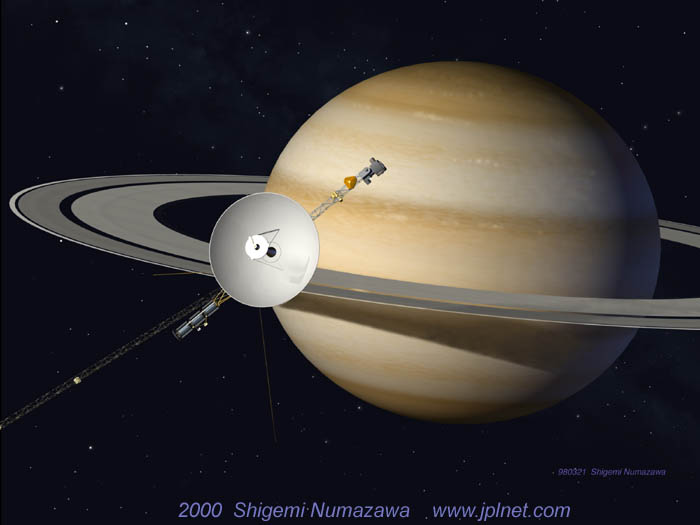
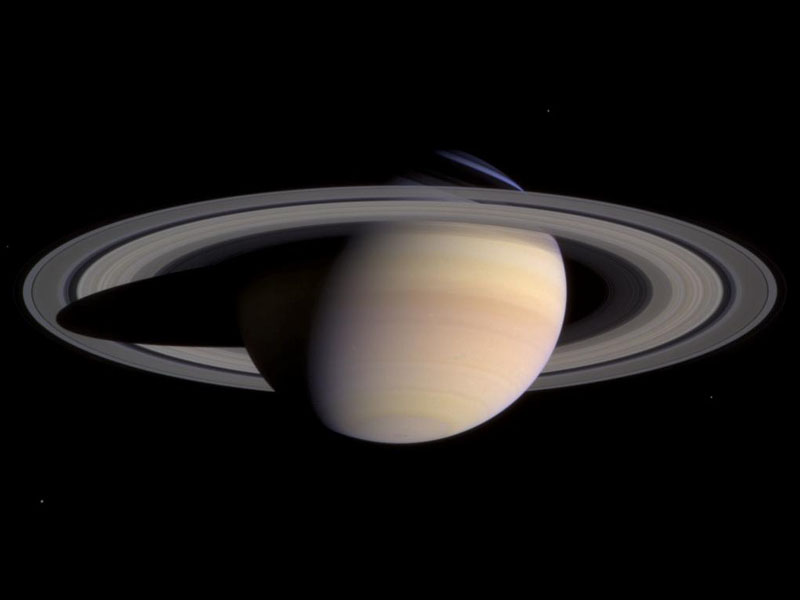



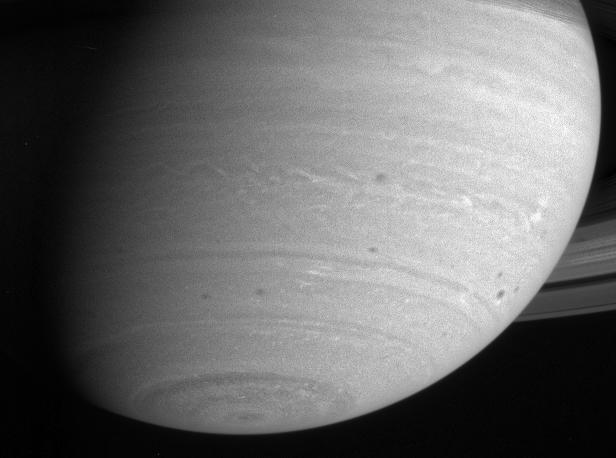




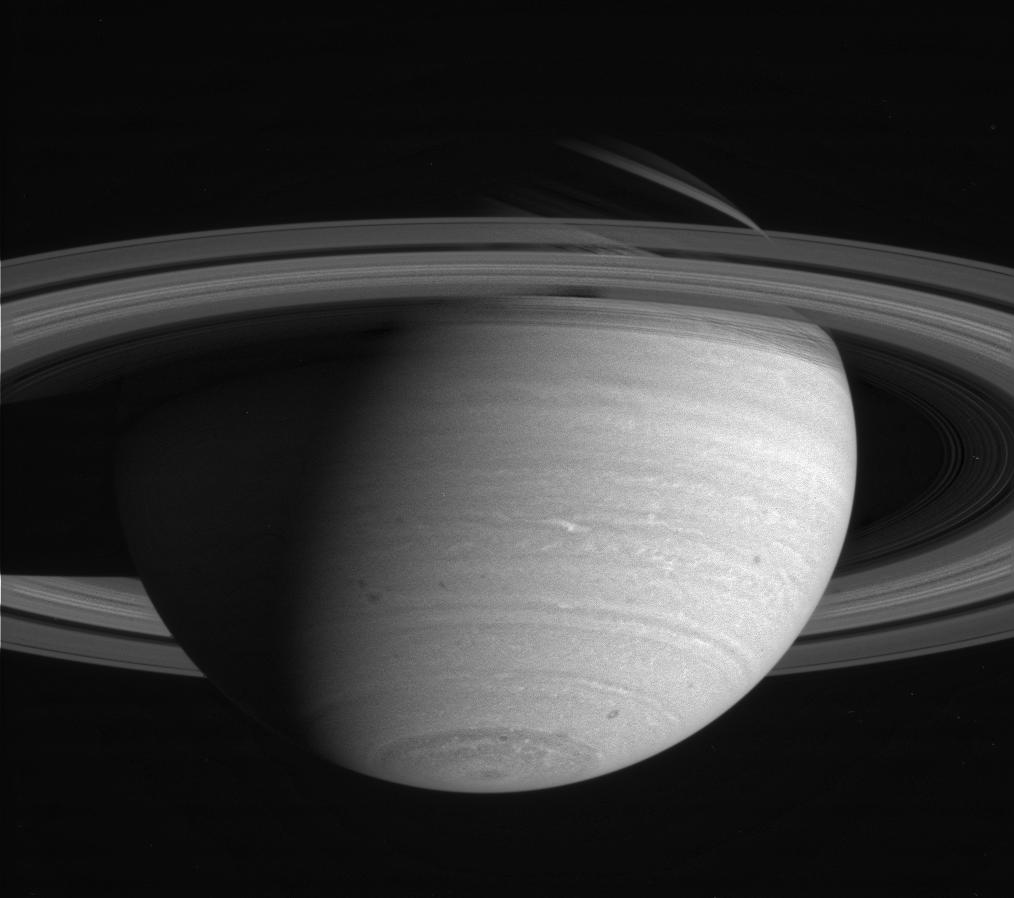
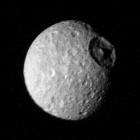




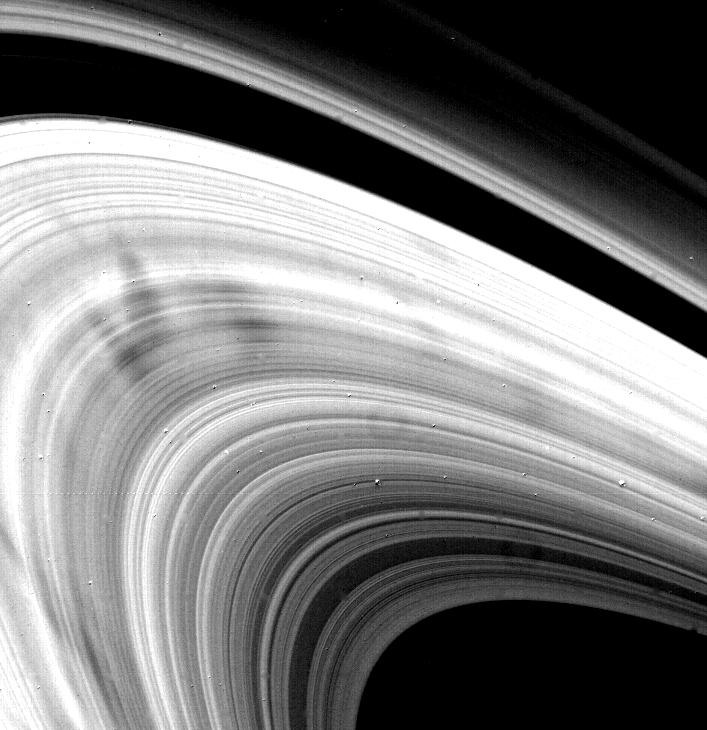
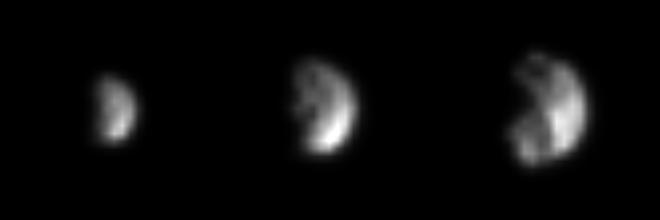
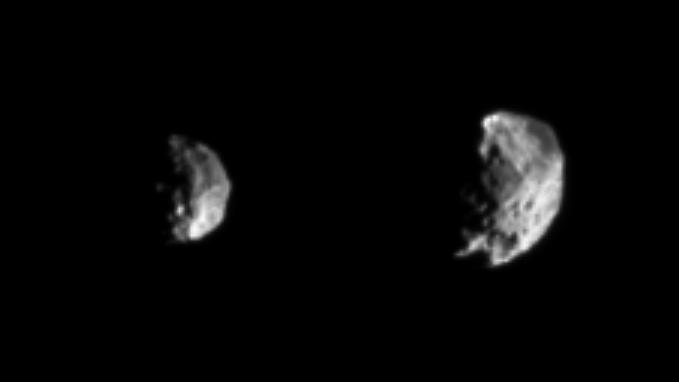
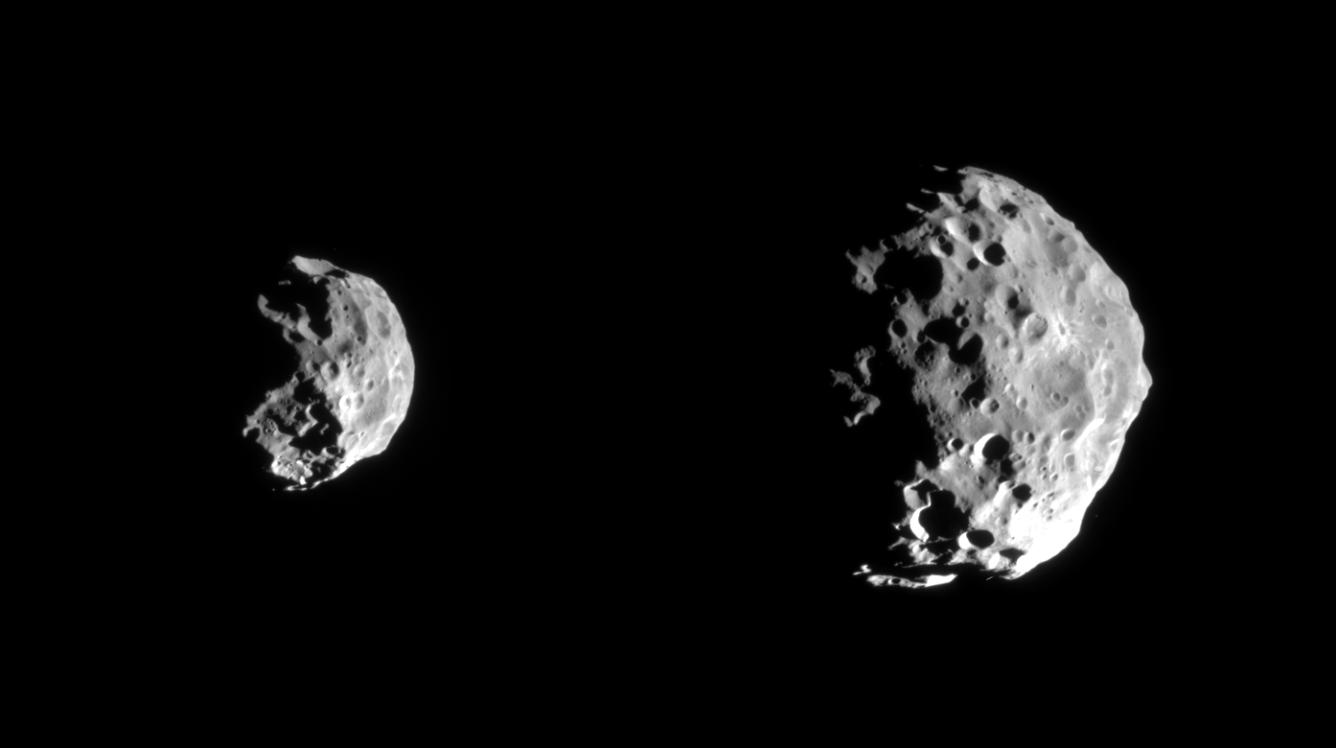

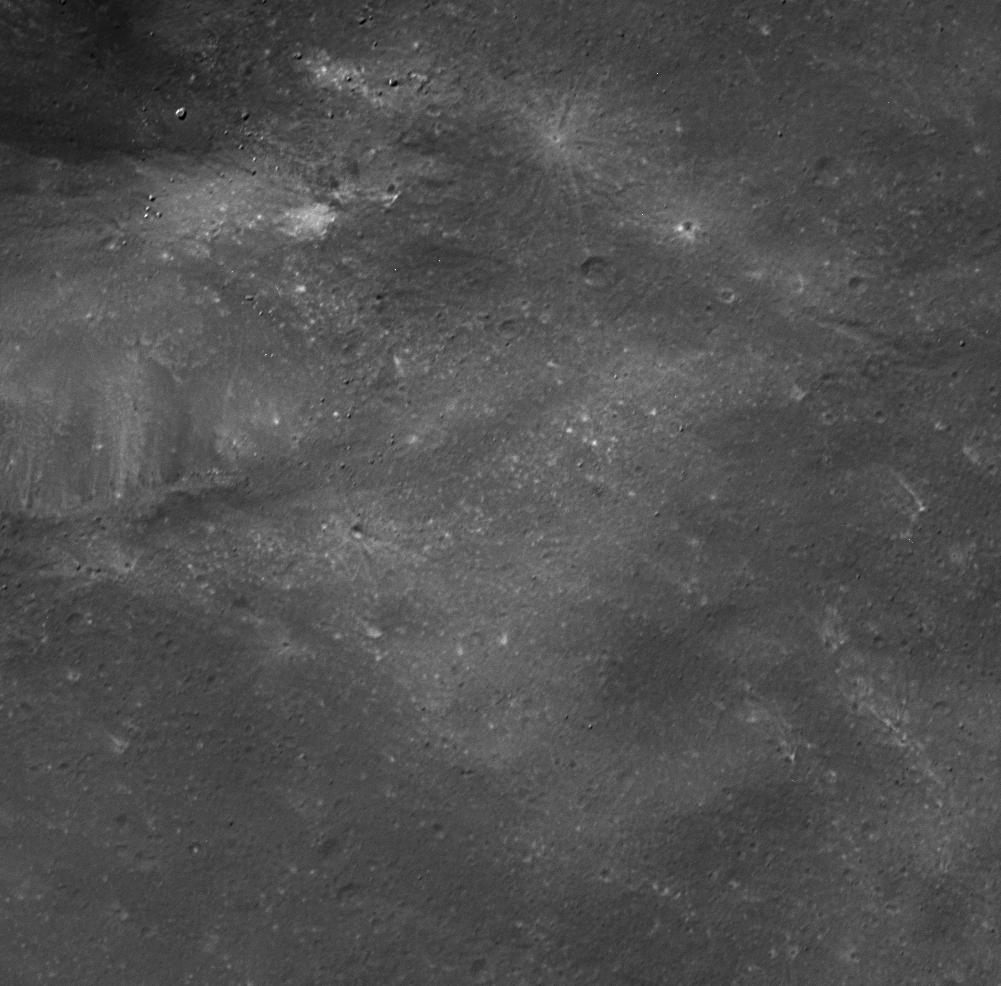
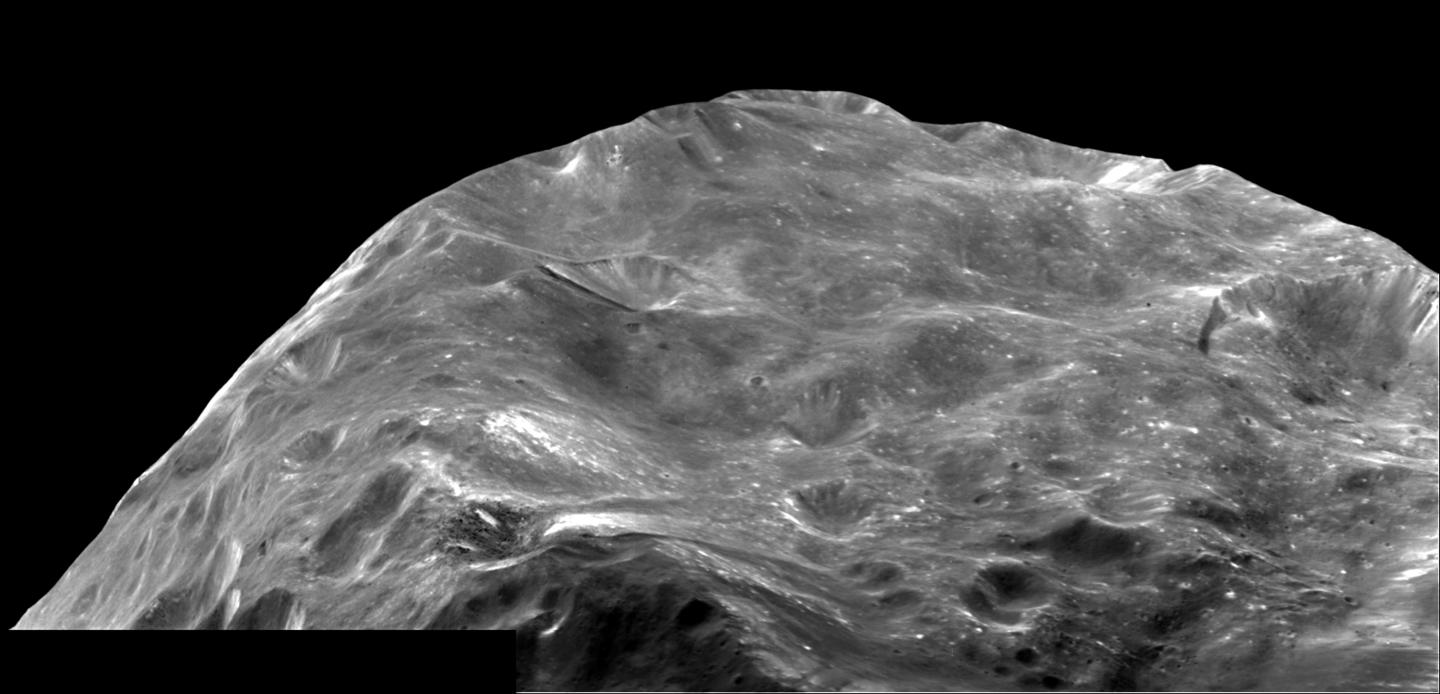
 meer meer meer
meer meer meer 